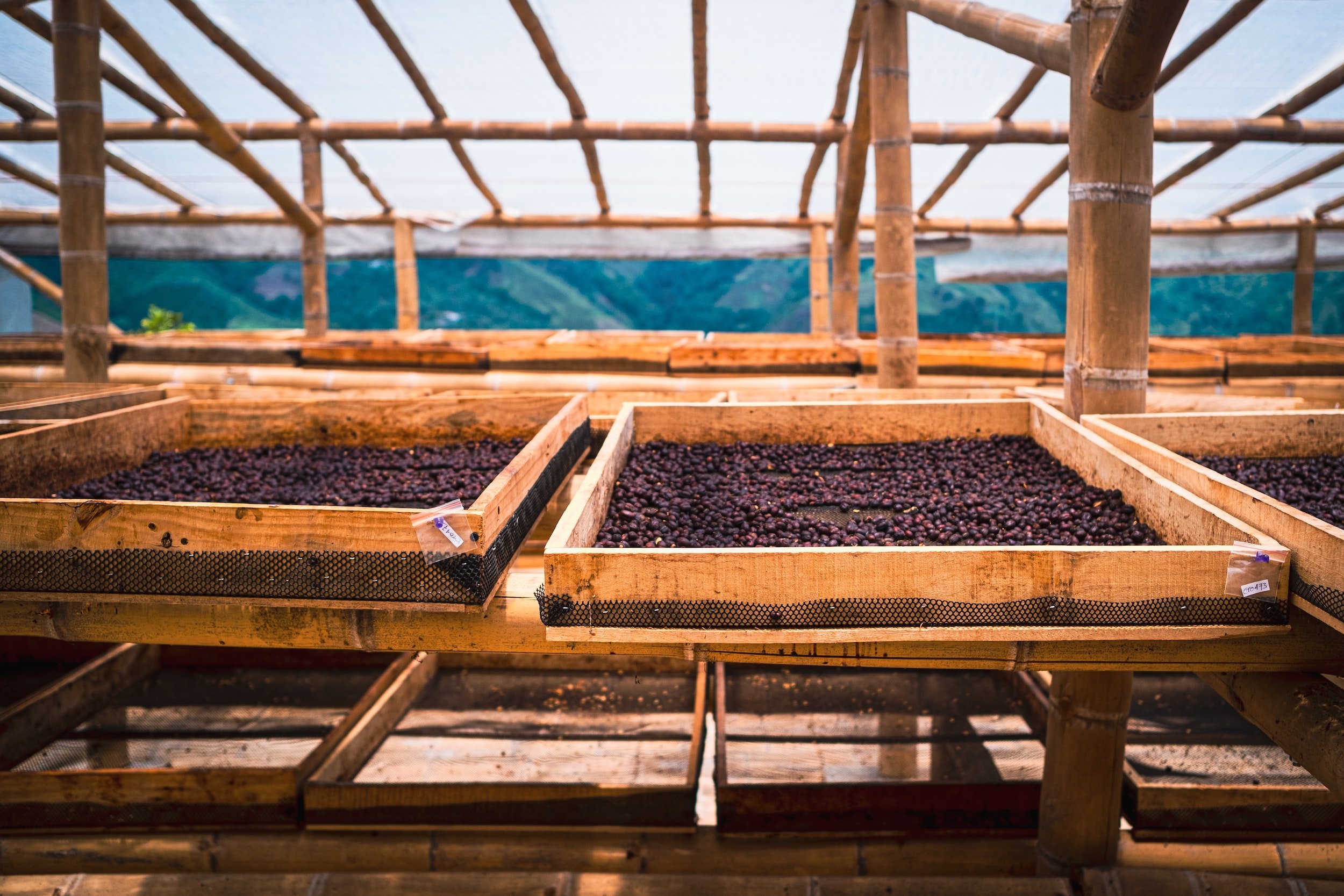Is Honey Processed Coffee Good for Espresso?
The quiet hum of your espresso machine, a gentle hiss of steam, and the comforting aroma of freshly ground beans filling the air.
Today, you’ve got something a little different—a honey-processed coffee.
It promises sweetness, body, and something new to savor.
But how well does it hold up in espresso?
Some coffee lovers say honey-processed beans, with their natural sweetness and syrupy texture, create a beautifully balanced espresso shot.
Others argue their lower acidity makes them too mellow for the bright, bold kick espresso usually offers.
The Short Answer: Honey-processed coffee can be great for espresso, offering a natural sweetness and smooth body. Its subtle flavors create a balanced shot, especially if you enjoy a less acidic, more mellow espresso. However, if you prefer bright, punchy shots, honey-processed beans might feel a bit too mild.
Let’s explore honey-processed coffee and see if it can take your espresso to the next level.
What Is Honey-Processed Coffee?
Despite what the name suggests, honey-processed coffee has nothing to do with honey.
It’s all about how the beans are dried after harvesting.
The outer skin and fruit are removed, but a sticky layer called mucilage is left on the beans.
This mucilage feels a bit like honey, giving the method its sweet-sounding name.
That sticky layer doesn't just sit there—it influences the flavor.
The beans absorb more of the fruit’s natural sugars, resulting in a coffee that’s smoother and often a bit sweeter than other processing methods.
Is Honey-Processed Coffee Washed or Natural?
It’s a little of both.
Honey-processed coffee sits between washed and natural methods.
- Washed coffee: The beans are stripped of their fruit and mucilage before drying, which brings out clean, bright flavors.
- Natural coffee: The beans are dried with the fruit still intact, giving a heavier, fruitier taste.
Honey-processed coffee keeps some of that sticky mucilage on the beans, capturing the fruitiness of natural coffee while maintaining a balanced, clean profile like washed coffee.
Coffee Processing Comparison: Honey vs. Natural vs. Washed
| Feature | Honey-Processed Coffee | Natural (Dry) Processed Coffee | Washed (Wet) Processed Coffee |
|---|---|---|---|
| Processing Method | Some fruit (mucilage) left on beans during drying | Beans dried with the entire fruit intact | Fruit and mucilage fully removed before drying |
| Flavor Profile | Balanced, smooth, with natural sweetness and body | Fruity, full-bodied, sometimes wine-like | Clean, bright, with pronounced acidity |
| Acidity | Moderate to low acidity | Low to medium acidity | High acidity, often with sharp, crisp notes |
| Body | Medium to full-bodied, syrupy texture | Full-bodied, often heavy | Lighter body, more clarity |
| Sweetness | Naturally sweet due to retained sugars | Can be very sweet with fruity notes | Less sweet, more focused on clarity and acidity |
| Water Usage | Moderate; less water than washed processing | Low water usage (minimal) | High water usage |
| Common Regions | Central and South America, particularly Costa Rica | Ethiopia, Brazil, dry regions | Central and South America, East Africa |
| Ideal for Espresso | Smooth, sweet, mellow espresso shots | Rich, fruity shots, sometimes overwhelming acidity | Bright, sharp, and clean espresso shots |
Where Is Honey-Processed Coffee Produced?
Honey-processed coffee isn’t limited to one region, but it’s popular in places where water is scarce.
Central and South America, especially Costa Rica, have embraced this method for its flavor benefits and lower water use compared to traditional washing methods.
Costa Rica is often credited with pioneering honey processing.
Their focus on sustainability and crafting unique coffee profiles has made them leaders in this method.
What Are the Types of Honey-Processed Coffee?
Not all honey-processed coffees are the same.
The key difference? How much of the sticky mucilage is left on the beans during drying.
To make it easy, producers color-code the different types.
Types of Honey-Processed Coffee
| Type | Mucilage on Bean | Flavor Profile (Sweetness & Body) |
|---|---|---|
| White Honey | Very little mucilage | Clean, mild sweetness, light to medium body |
| Yellow Honey | Moderate amount of mucilage | Balanced, moderate sweetness, medium body |
| Red Honey | More mucilage left | Rich, fruity, higher sweetness, medium to full body |
| Black Honey | Maximum mucilage | Syrupy, intense fruitiness, very sweet, full and syrupy body |
The more mucilage left, the closer the flavor is to natural coffee—full-bodied and fruity.
How Does Honey-Processed Coffee Taste?
Honey-processed coffee often carries a natural sweetness, making it a favorite for those who prefer a mellower, smoother cup.
By preserving some of the natural sugars, this process can highlight flavors like caramel, stone fruit, or even honey itself.
In espresso, this can be both a perk and a challenge.
The sweetness and body of honey-processed beans can create a beautifully balanced shot, especially when paired with milk in lattes or cappuccinos.
However, if you prefer a punchy, acidic espresso, honey-processed coffee might feel a bit too tame.
So, is honey-processed coffee a good choice for espresso?
It depends on what you’re looking for.
If you enjoy a smooth, full-bodied shot with subtle sweetness and complexity, honey-processed beans could be a great match.
However, if you’re after a bright, acidic espresso with sharpness, it might not hit the mark.
The lack of strong acidity means it won’t deliver that citrusy punch some espresso drinkers crave.
The Final Sip
In the end, honey-processed coffee can shine in espresso—if you appreciate its smooth, sweet profile.
Its natural sugars and balanced body make it a great option for those who enjoy experimenting with different flavors.
Try a few honey-processed beans, adjust your brewing method, and see if it becomes your new go-to.
Resources:
Honey Processing: Did the World Steal Costa Rica's Coffee Niche? – Intelligence Coffee
What is Honey-Processed Coffee? – Sprudge.com
The World Atlas of Coffee by James Hoffman



